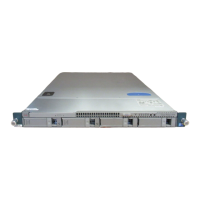Step 8
Create the port channel type in the upstream switch. See Creating a Port Profile for a Port Channel.
Migrating Port Profile Types in a Port Profile
To move port profile types in a port profile, you tear down the existing port channel then recreate the port
channel.
Before You Begin
Log in to the CLI in EXEC mode.
Procedure
Step 1
Place the host in maintenance mode.
Step 2
Do one of the following:
•
If distributed resource scheduling (DRS) is enabled, make sure to wait until the virtual machines are
migrated to other host(s).
•
Otherwise, manually migrate the virtual machines.
Step 3
When all the virtual machines are successfully migrated, from the Cisco Nexus 1000V CLI, create a new
Ethernet type port profile for the uplink ports on this host.
•
Enter one of the following commands:
◦
channel-group auto mode active | passive
◦
channel-group auto mode on mac-pinning
•
Perform a CLI override on the existing port channels.
Step 4
Remove the port channel that you want to migrate in the upstream switch. See Removing a Port Channel
Group from a Port Profile.
Step 5
Remove the port channel in the upstream switch.
Step 6
Manually configure subgroup IDs in the Cisco Nexus 1000V Ethernet interface. See Manually Configuring
Interface Subgroups
Step 7
Change the port channel type in the Cisco Nexus 1000V port profile. See Migrating a Channel Group to a
Port Profile
Step 8
Change the port channel type in the Cisco Nexus 1000V port profile. See Connecting to a Single Upstream
Switch
Step 9
Bring the host out of maintenance mode.
Step 10
Migrate the virtual machines back to this host.
Step 11
Save the running configuration persistently through reboots and restarts by copying it to the startup configuration
by entering the following command:
copy running-config startup-config
Cisco Nexus 1000V for VMware vSphere Interface Configuration Guide, Release 5.x
70
Configuring Port Channels
Migrating Port Profile Types in a Port Profile

